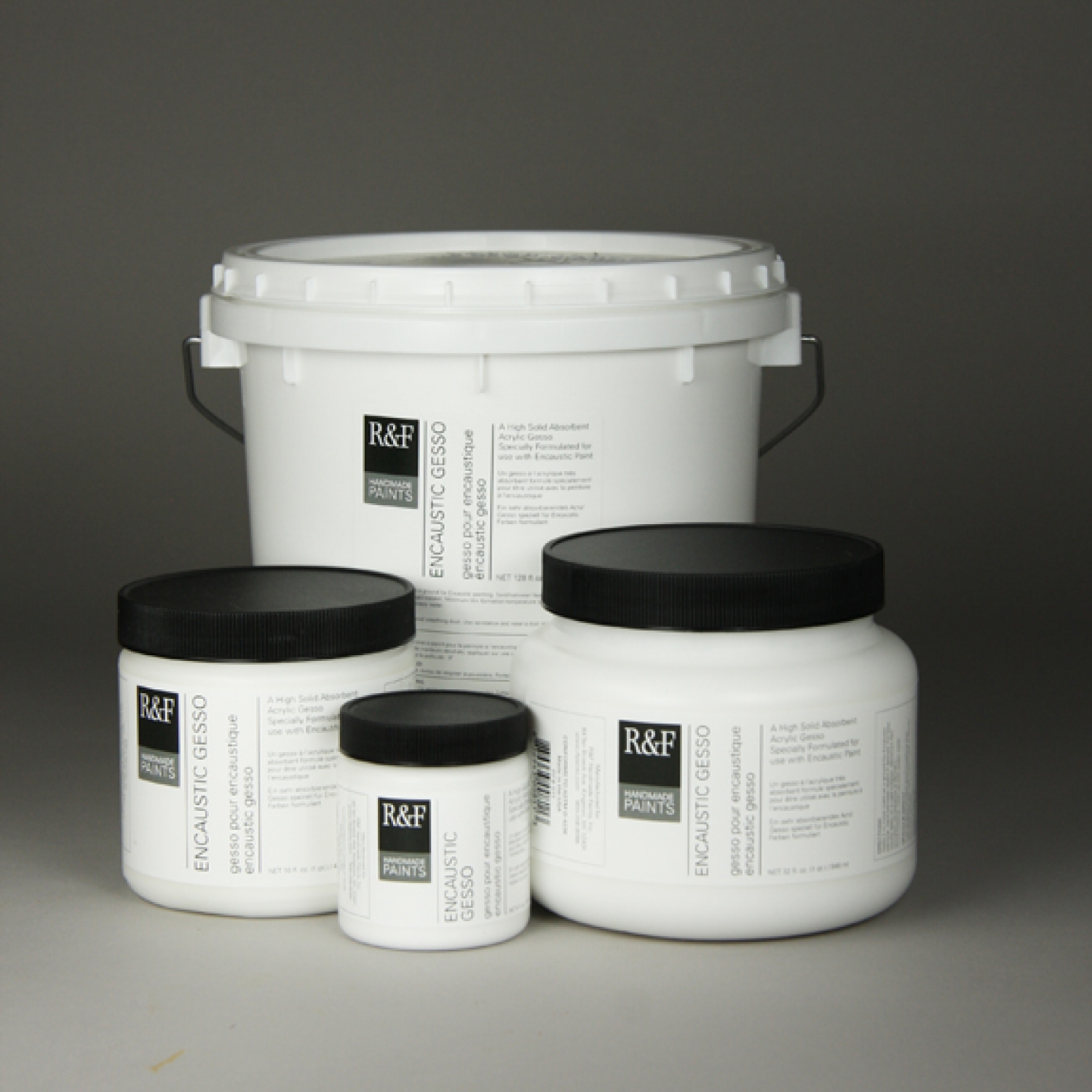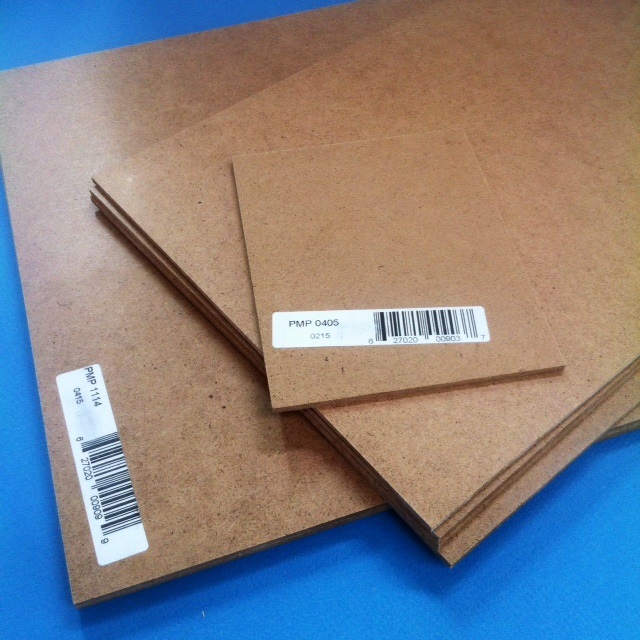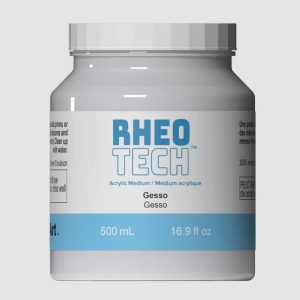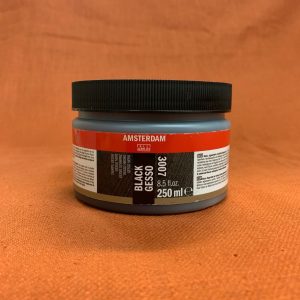Description
R&F’s Encaustic Gesso provides an easy-to-use, water-based ground specifically formulated for use with encaustics. This gesso differs from typical acrylic gesso by having a higher proportion of solid to binder, making it highly absorbent while retaining the adhesive qualities of the acrylic. With R&F Encaustic Gesso you can easily brush or roll on a white ground that quickly dries to a ready-to-paint surface.
Myths and Realities about Acrylic Gesso and Encaustic
An acrylic binder does not mean a less absorbent coating. R&F Encaustic Gesso is extremely absorbent and durable. Testing at R&F has demonstrated time and again, it is not the binder that dictates whether or not a ground is suitable for encaustics—it is how one uses it.
Early on, R&F advised artists against the use of encaustics on top of acrylic mediums. From 1988 until 2007, that was perfectly sound advice. R+F did not feel that acrylic mediums and grounds on the market at that time had the tooth necessary for encaustic to adhere to a substrate. In 2008, after a considerable development, R&F introduced their acrylic-based encaustic gesso.
So, how does this work? Acrylic is bad, right? Well, no.
When used properly, acrylic is one of the most durable binders available to artists. It has wonderful adhesive properties and flexibility. Carefully tweaked with some other materials, it is quite suitable for use with encaustic paint. Think of it this way. For years, artists have successfully used traditional rabbit-skin glue as a painting ground. Rabbit-skin glue by itself is a slick, nonporous, and brittle medium. On its own, it is not a good ground for encaustic. However, when you combine it with the right proportion of solid materials (titanium, chalk, etc.) it becomes a very suitable ground.
The reason R&F feels confident about this, is that they test them until they feel confident about their performance. When they developed their encaustic gesso, they wanted something that was absorbent and felt like watercolor paper, but could be brushed on smooth and dry quickly. They also wanted something that was not soluble with water after it dried, since many artists combine encaustics with other media. They also wanted a gesso that had excellent adhesion on all kinds of surfaces and would be flexible and durable enough to withstand changes in the environment over very long periods of time.
After a lot of hard work and lots of testing, they got all of these things. We recommend you apply R&F Encaustic Gesso by rolling on two thin coats with a foam roller. One heavy brush coat will also do, but it will take longer to dry.






